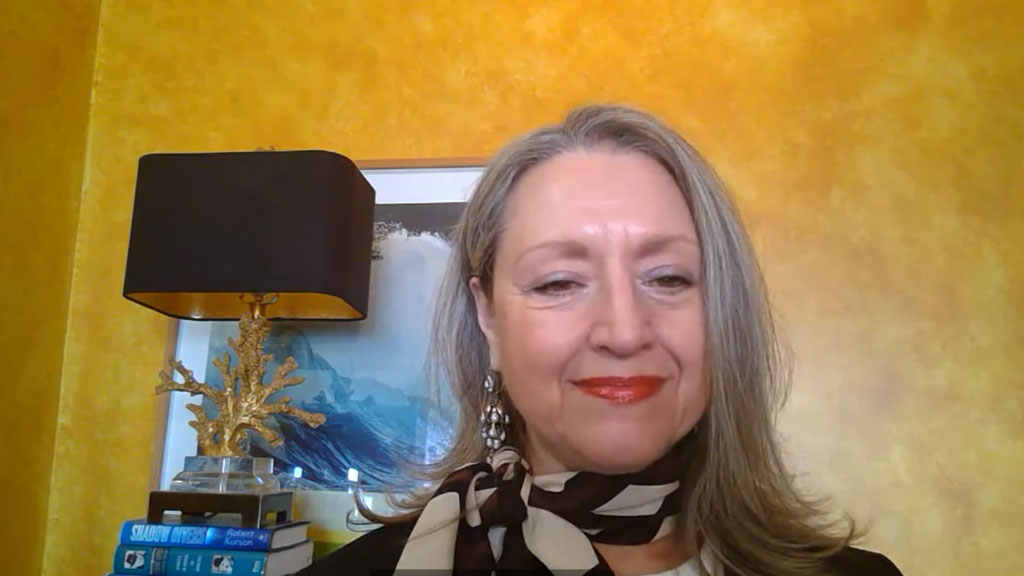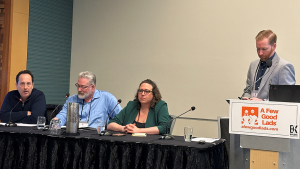Building an architecture or design services firm during unprecedented times can be a challenge.
Johanna Hoffmann, CEO of Oomph Group, offered her advice as a marketer during a recent Buildex Vancouver session. She explained with climate targets, 3D printing, artificial intelligence (AI), high-tech materials, modular construction methods and more coming into the market, competition is only going to get more fierce.
“You really need to sit and think about where you will move your firm to next and it is more important than ever to have a strategic approach,” said Hoffmann, noting this applies to firms big and small.
The first step is telling your story. This means going beyond just showing photos of previous work and listing what services you provide.
“Everyone has similar descriptions of their work, identical lists of services and sectors,” said Hoffmann. “You could take copy from most firms and apply it to another, and it still fits.”
She suggested trying to put yourself in your target audiences’ shoes and then address their issues or fears.
For example, she noted FedEx doesn’t list how large their aircraft fleet is or how experienced their pilots are, their messaging address fears that packages might be late. Scotiabank’s slogan, “You’re richer than you think,” addresses customer fears they might have financial problems.
Drilling into this takes market research and skipping this step is a fatal error Hoffmann says many firms make.
“This truly is the difference between failure and success,” she said.
Hoffman suggested crafting questionnaires and then contacting potential customers to ask the questions personally. She said many are more than happy to communicate what their pain points are in hopes that some firm may address them. It is also a great way to impress customers indirectly with your subject knowledge and expertise without directly presenting to them.
Hoffman cited Farrow as an architectural firm that has put these pieces together. The firm focuses on health care work with messaging about creating spaces that promote wellness and healing. They use terms like “architectural super vitamins” and are the first firm to have an architect with a masters in applying neuroscience to architecture.
“They are able to compete with firms that have tens of thousands of people,” said Hoffmann. “If I were a neurosurgeon, I would understand that they are unique and that they should be hired.”
However, standing out just for the heck of it doesn’t always matter.
Hoffmann explained one must stand out in relation to competitors. For example, Corona beer has a clear bottle instead of every other green or brown bottle. If they made water, this would not set them apart.
Another piece is targeting your efforts and letting people know you are ready to be hired.
Hoffmann stressed optimizing your firm’s websites for search engines is key.
It’s also critical to get plugged into the right networks. B2B customers tend to hang out more on LinkedIn or Twitter while more private sector customers are active on Facebook and Instagram.
“Get these things set up, learn how to use them and interact,” she said.
Hoffmann stressed it is important to form strategic alliances with companies or consultants that can bring you on board for their projects or enhance your capacity to go after your work.
In terms of being more resilient, Hoffmann said staying on top of trends is critical.
This includes how COVID is changing the sector, new technologies that are coming online and even how demographics are impacting regional growth.
One simple trick, said Hoffmann, is following the money.
“P3 projects came to be because taxpayers were tired of paying for contracts that were always late and more expensive,” she said, noting money is now flowing to other forms of P3 projects like bundling.
Finally, Hoffmann advised firms to not put all their eggs in one basket. She suggested always having three areas of focus and making one of them an essential market.
“This will help protect you,” she said. “I have been through three economic downturns and different boutique firms have been left behind.”
She noted the hospitality sector was hit especially hard by the COVID-19 pandemic.
“If your stool has one leg and it breaks you are done,” she said.
Follow the author on Twitter @RussellReports.











Recent Comments
comments for this post are closed